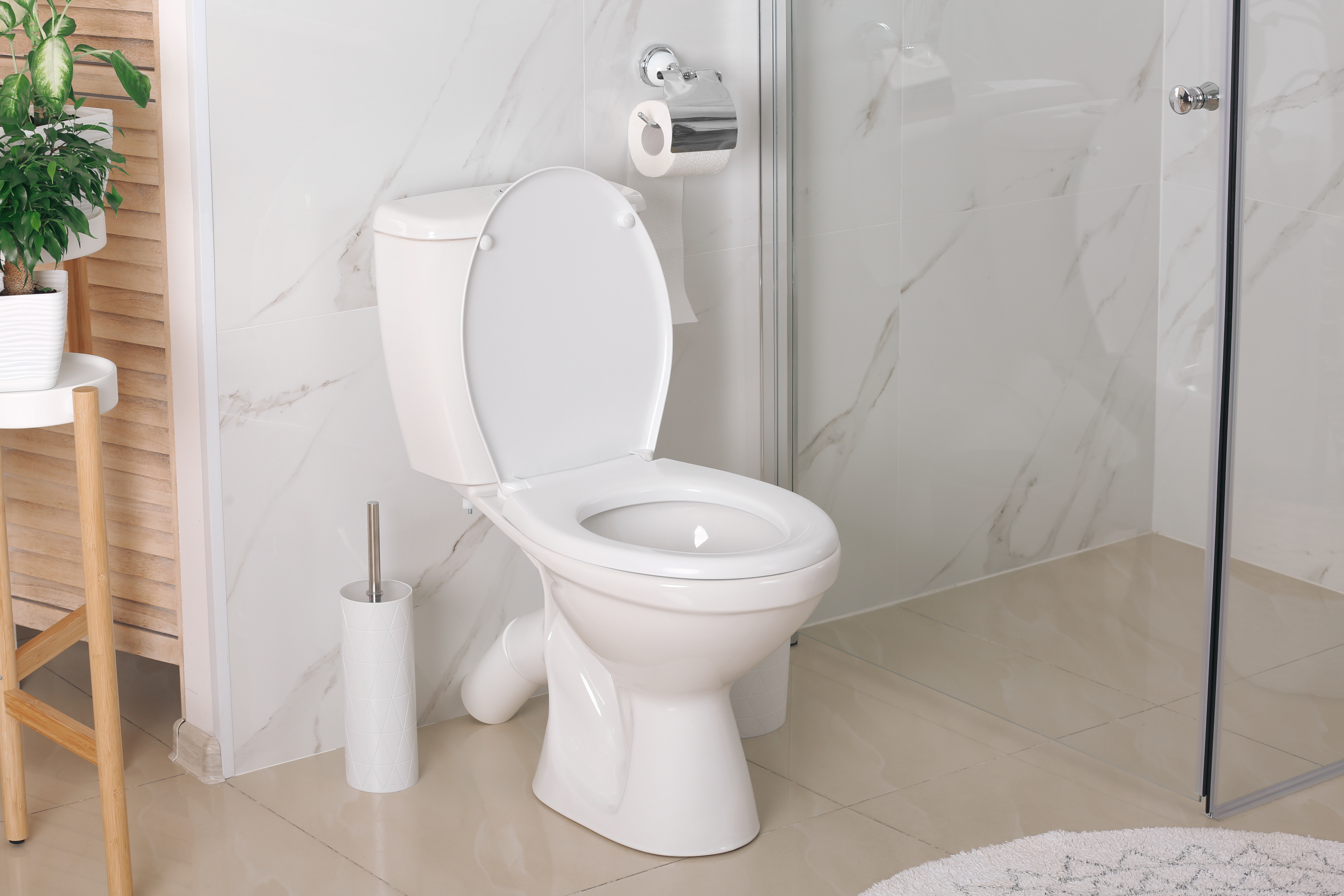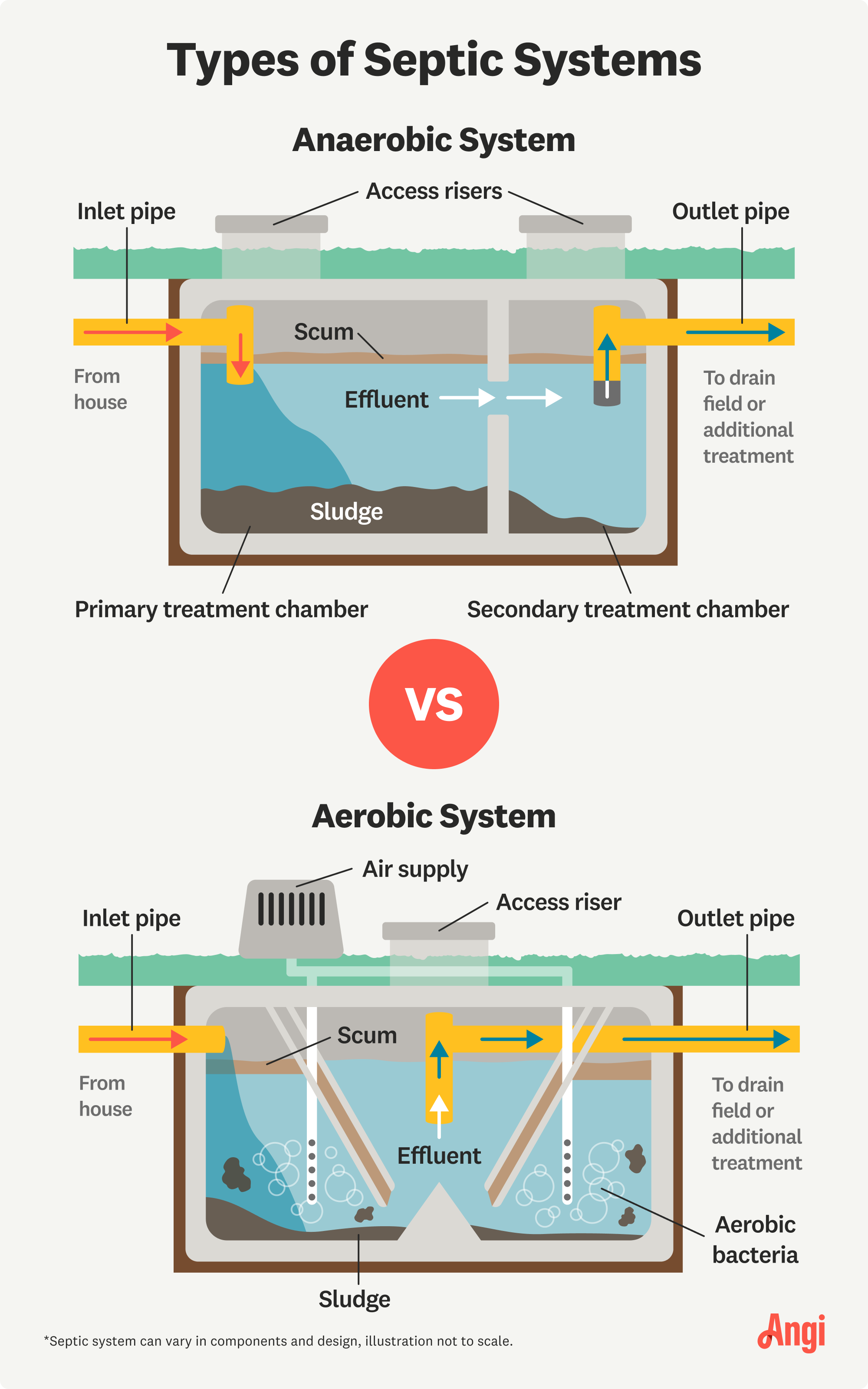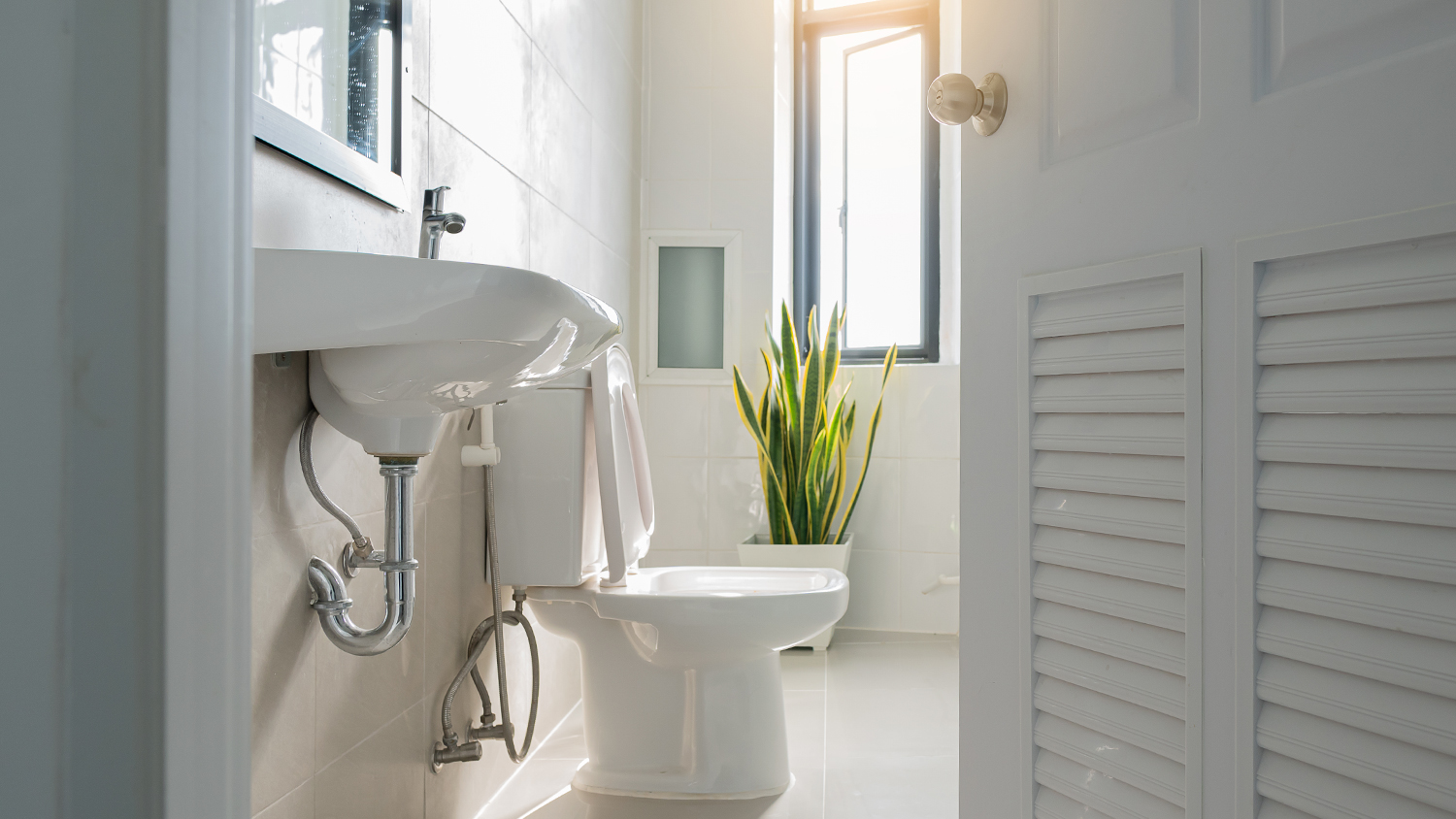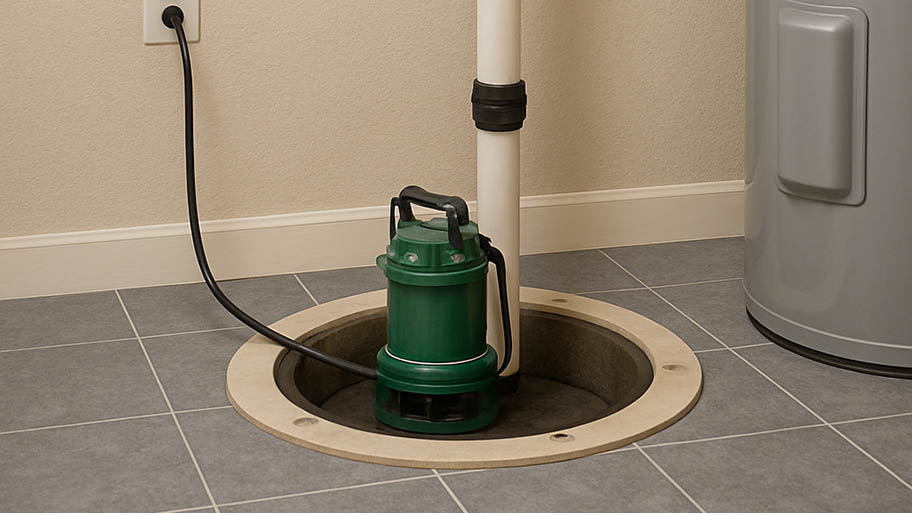
Need to know what sewer line replacement costs in Portland, OR? This guide will help you prepare to budget for sewer line replacement done by local contractors.
Septic system installation costs between $5,312 and $8,675 in Dallas, Texas, with an average of $6,720. Your septic pro will consider the system type, size, and location for a personalized quote.


Soil in Dallas varies from sandy to clay, which impacts drainage, system design, and installation costs.
The flat land can make installation easier and potentially less expensive than in hilly areas.
The Texas Commission on Environmental Quality and local offices issue septic system permits, and fee amounts vary by municipality.
Some areas of Dallas require a licensed septic tank installer to conduct a site evaluation before the project begins, which includes an inspection fee.
If you live outside the city sewer zones in Dallas, Texas, your home will likely need a septic system. Most Dallas homeowners pay $6,720 to install a new septic system—with costs ranging between $5,312 and $8,675—although costs can climb for engineered or aerobic setups. Factors like tank size, system type, soil absorption, and permits all influence your final price.
Installing a septic system in Dallas means balancing dry Texas heat, solid drainage patterns, and strict state regulations. The total cost will depend on everything from tank material and size to the type of system that best matches your lot size and soil type.
The septic tank size you need will depend on the number of bedrooms your home has. For a two- or three-bedroom home, you’ll need a 1,000-gallon septic tank, which costs $1,800 to $3,200 for the tank alone.
Larger houses have more sinks, toilets, bathtubs, and other wastewater sources that flow into the septic tank, and smaller septic systems cost less than larger ones.
| Septic Tank Size (Gallons) | Home Size (Bedrooms) | Average Septic Tank Cost |
|---|---|---|
| 500 | 1 | $900–$1,100 |
| 1,000 | 2–3 | $1,800–$3,200 |
| 1,250 | 4 | $2,200–$3,800 |
| 1,500 | 5 | $2,500–$4,100 |
| 2,000 | 6+ | $3,000–$10,000 |
Septic tanks are commonly made of plastic, concrete, or fiberglass, with fiberglass tending to be the most expensive. Here’s how much a tank costs based on each material.
| Septic Tank Material | Average Cost | Pros | Cons |
|---|---|---|---|
| Concrete | $1,600–$2,000 | Durable, code-compliant | Heavy, more difficult to install |
| Plastic | $2,000–$2,700 | Lightweight, affordable | Can warp in shifting soil |
| Fiberglass | $3,000–$4,000 | Corrosion-resistant, stable | Higher cost, may need anchoring |

Each type of septic system comes with its own set of pros and cons. While anaerobic systems are relatively low-maintenance, they aren’t great for small properties. Similarly, anaerobic systems can do well in small spaces but require extra work.
| Anaerobic | Aerobic |
|---|---|
| Anaerobic bacteria break down waste | Aerobic bacteria break down waste |
| More affordable | More expensive |
| Uses fewer chemicals | More efficient |
| Needs a larger leach field | Good for smaller properties |
Anaerobic: Anaerobic systems are more common and cost $3,000–$8,000. They’re less costly than aerobic systems and don’t need extra power or chemicals, but they’re less efficient and require a larger leach field. A pipe runs from the house to the septic tank, where another pipe runs into the leach field. Anaerobic bacteria break down solid waste before the system distributes the wastewater into the soil.
Aerobic: Aerobic septic systems utilize oxygen pumped into the tank to activate bacteria that feed on the solid waste. They’re more expensive at $10,000–$20,000 but are more efficient and work well on smaller properties. They require additional power to run, so hook yours up to a power generator in case of a power outage. Otherwise, these systems can plug into your property’s main power source.
Before you can install a septic system, you’ll need to test your soil and prepare the site. Dallas has a mix of sandy soil and clay that can complicate drainage and affect the type of system you can use. Talk to a septic tank company in Dallas, Texas, about your site’s specific needs. Expect costs to include:
Land Survey: You’ll need to get a land survey before installing a septic system to ensure your plans fall within property lines. Expect to spend $330–$900 to hire a licensed land surveyor.
Percolation Test: Before the installation, you need a local perc test pro to perform a percolation test. The test measures water drainage in the soil, soil type, and the height of each sediment layer on your property to determine the best type of septic system for you. The cost to test your soil is $700–$2,200.
Leach Field Installation: Septic tank systems consist of a septic tank and a trench referred to as a leach field or drain field. This section of the system transports the wastewater back to the soil. Drain field installation costs $5,000–$12,000.
You’ll need a licensed installer to plan, permit, and install your septic system. DIY installations are not allowed under Texas law. Here are the ins and outs of pro costs for installing a septic system in Dallas, including labor, permits, inspections, soil reports, and maintenance.
Labor costs vary based on the complexity of the job, tank size, and whether you're using a standard or engineered system. Expect to pay between $3,000 and $7,500 for labor, which includes excavation, tank placement, and leach field construction.
Septic system specialists may charge $75 to $120 per hour for inspections, adjustments, or minor repairs.
Septic permits in the Dallas area range from $200 to $1,500, depending on the county. You'll need to apply through the Texas Commission on Environmental Quality (TCEQ) or another local authority. Most jurisdictions require:
A site evaluation by a licensed septic system installer
Submitting a plan for approval
Final inspection
Certain municipalities have specific guidelines, so check with your local permitting office before you hire a contractor or begin work.
Expect regular inspections before, during, and after the installation. These may include the following:
Site inspection before permit approval
Mid-project inspection once the tank is placed and before it’s covered
Final inspection before you use the system
Each of these inspections may have a fee, but most are bundled into the permit costs. You might see them as itemized fees on your permit receipt, or the permitting office might lump them together as inspection fees. Your pro can help you understand the septic tank installation requirements that apply to your property.
If your property is in a floodplain or has poor drainage, you may need a custom system design or soil amendment plan from a licensed engineer. These reports cost $500 to $2,500 and are required before permitting in more complex installations.
Aerobic septic systems need continuous power for aerators and pumps. In Dallas, code inspection requirements vary by location, so your septic contractor may need to coordinate with a licensed electrician. Expect to spend an additional $800 to $2,000, depending on the distance from your main panel and the specifications of your septic system.
A well-maintained septic system can serve your home for 25 years or more—but only if you stay on top of routine care. Plan to have your tank pumped every three to five years, which costs between $300 and $600, depending on the household size and water usage.
Pumping your septic tank every three to five years is one of the most important septic maintenance tasks. When you combine that with flushing only approved items (toilet paper and waste) and avoiding driving over your drain field, you have a recipe for a long-lasting septic system.
Unlike colder climates, freezing isn't a major concern in North Texas. However, extended drought and soil shifting—especially in clay-heavy regions—can damage tank connections or leach field lines. So it’s smart to schedule regular inspections and avoid planting trees near the drain field. These small steps can help you avoid expensive septic tank repair costs and keep your system working efficiently year-round.
A professionally installed septic system can add value to properties in and around Dallas without municipal sewer service. A new or upgraded septic system in an area that doesn’t have city sewer access can increase home resale value by:
Increasing resale value by guaranteeing safe and legal septic disposal
Appealing to buyers seeking rural or off-grid living
Allowing home additions or accessory dwelling units (ADUs)
Systems that meet modern standards—especially aerobic systems—can add up to 10% to your property value if you follow installation best practices and maintain them.
Home is the most important place on earth, which is why Angi has helped more than 150 million homeowners transform their houses into homes they adore. To help homeowners with their next project, Angi provides readers with the most accurate cost data and upholds strict editorial standards. We survey real Angi customers about their project costs to develop the pricing data you see, so you can make the best decisions for you and your home. We pair this data with research from reputable sources, including the U.S. Bureau of Labor Statistics, academic journals, market studies, and interviews with industry experts—all to ensure our prices reflect real-world projects.
Want to help us improve our cost data? Send us a recent project quote to [email protected]. Quotes and personal information will not be shared publicly.
From average costs to expert advice, get all the answers you need to get your job done.

Need to know what sewer line replacement costs in Portland, OR? This guide will help you prepare to budget for sewer line replacement done by local contractors.

The average cost to connect to a public sewer line in Columbus, OH, depends on the linear footage, piping material, local regulations, and more.

Need to know what sewer line replacement costs in San Francisco, CA? This guide will help you prepare to budget for sewer line replacement done by local contractors.

A saturated leach field can lead to costly damage to your plumbing and yard. Learn how to fix a saturated leach field with this guide.

Knowing your septic tank’s location can help you clean and repair the system quicker. Learn five methods for how to find a septic tank lid with this guide.

It can be unsettling when your sump pump smells like sewage, but it doesn’t always indicate a serious issue. Here are four potential causes and solutions.